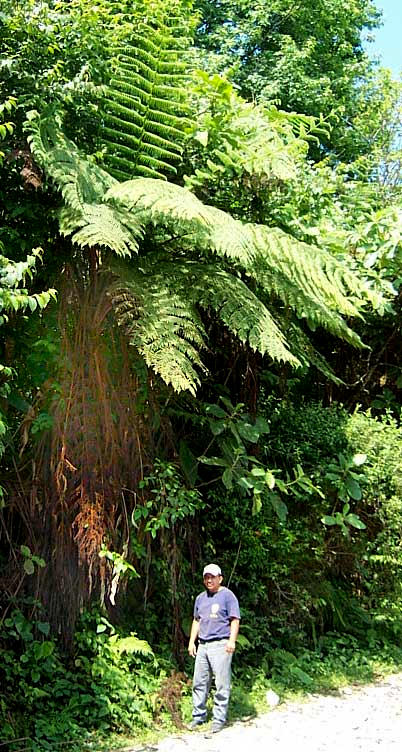Excerpts from Jim Conrad's
Naturalist Newsletter
from the June 9, 2007 Newsletter issued from Sierra Gorda Biosphere Reserve Headquarters in Jalpan, Querétaro, México
TREE FERN
There on the eastern slope of the Eastern Sierra Madres the rainy season already had begun, though not with its usual vigor. Vegetation was rank and the landscape was as green as Ireland, all so very different from the dried-crisp scrub in the valley back at Jalpan. From our picnic spot we had a view toward the Gulf lowlands in the east, but the lowlands were hidden by cottony clouds and slowly swirling haze, clearly building toward an afternoon storm.
Right beside our picnic spot stood a tree fern with individual fronds up to 12 feet long. Above, you can see Pancho standing below it at the right.

The fern is LOPHOSORIA QUADRIPINNATA, distributed from Mexico and the West Indies south to Brazil. Despite its exotic look, it's sort of a "weed tree," being among those tree-sized plants that invade disturbed areas such as fields while the vegetation cover "succeeds" through one stage after another, until stable forest returns.
One implication of this being a "real fern" is that it reproduces by spores instead of flowers and fruits. Tree ferns reached their peak of diversification during the Carboniferous Period 354-290 million years ago. Later they lost ground to species benefiting from the later-day inventions of flowers, fruits and seeds. In a sense, Lophosoria quadripinnata is a living fossil, somehow surviving despite its outdated technology.